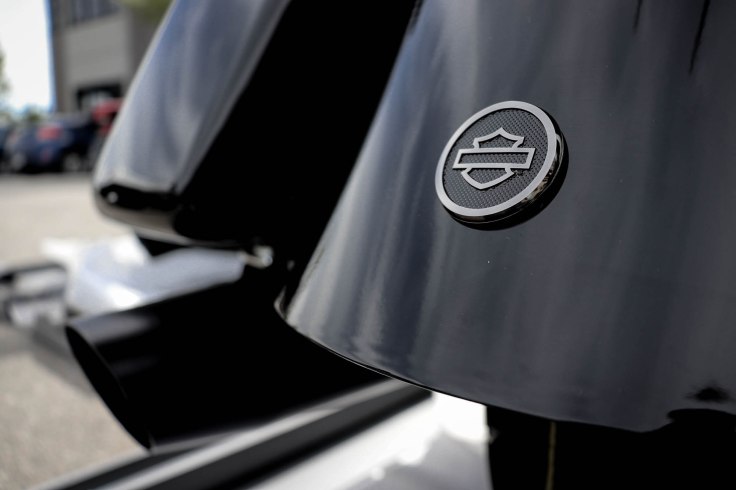When RDRS was announced at the 2020 Harley bike launch it kind of flew under the radar, but maybe that’s because all of the individual systems in the Reflex™ Defensive Rider System are meant to go unnoticed. We previously did a blog post breaking the news on the new Reflex™ Defensive Rider System (RDRS). In that post we did a bit of a breakdown of what all of the acronyms mean and how they work. But now after a week, we have realized just how important all of these new technologies are for riders. The RDRS system is designed primarily as a safety system but it will also make riding your bike easier and more convenient. The majority of the rider aids in the RDRS are things that you might not even notice working. I’ll give you an example day to show how the RDRS can work to make riding better
Let’s say you are heading out early on a Sunday spring morning to tackle some of the Game of Barnes missions. It’s a warm day; maybe a little warmer than usual. Normally with changes in the temperature you should check your tire pressure to ensure they are providing the maximum grip. Now, instead of getting out a pressure gauge, you can simply swipe to the tire pressure page on your Harley’s Boom!™ Box infotainment system and see a live reading. Now you can be riding instead of looking for that gauge.
Once you are out on the road you find the perfect mountain pass and pick up the pace. You are coming up to a corner and start to brake using just the lever. Here, the Cornering-Enhanced Electronic Linked Braking and the Cornering-Enhanced Anti-Lock Braking System work together to slow you down as quick as possible. Whether you squeeze the lever or press the pedal, the C-ABS will deliver the maximum amount of braking with available traction while the C-ELB will automatically adjust the amount of brake pressure individually on the front and rear wheels. The system is designed to slow you down while maintaining perfect control. These two systems will even adapt as you lean through a corner, so you can have maximum braking performance at maximum lean angle.

Eventually, the road comes to a stop sign and you slow down. The stop is on a slope. Normally you would have to balance the brakes and clutch as you take off to prevent the bike from rolling backward. Now, the Vehicle Hold Control can take over and will hold the bike for a few seconds while you release the clutch. The bike will release the brake right as it detects it’s starting to move forward.
After a day of completing challenges, you are on your way home! You’re getting a bit tired and downshift a little early. The Drag-Torque Slip-Control System will seamlessly adjust the engine, breaking to give you a smooth and comfortable downshift. The same system will make sure even in the most aggressive downshift scenarios that the rear wheel doesn’t lose traction and will ensure that shifts are smooth and controlled.

Harley-Davidson® has really considered how owners actually use their bikes and successfully created a system that is so good you won’t even know it’s there. The entire point of each of the technologies in the Reflex™ Defensive Rider System is to subtly make your riding easier and safer. All of this adds up to lower the barrier of entry for riders, especially on big touring bikes. RDRS is standard on all 2020 LiveWire™, CVO™, Police, Trike models (trike-specific RDRS), and optional for all Touring models, except Electra Glide® Standard. The fact that this system comes standard on the Livewire™ shows that Harley is trying to use all of the latest technology to attract new riders, and maybe convince some riders they are ready for the Touring bike they’ve been considering. The RDRS gives you the confidence to ride harder and focus on the freedom that a Harley-Davidson® provides.
